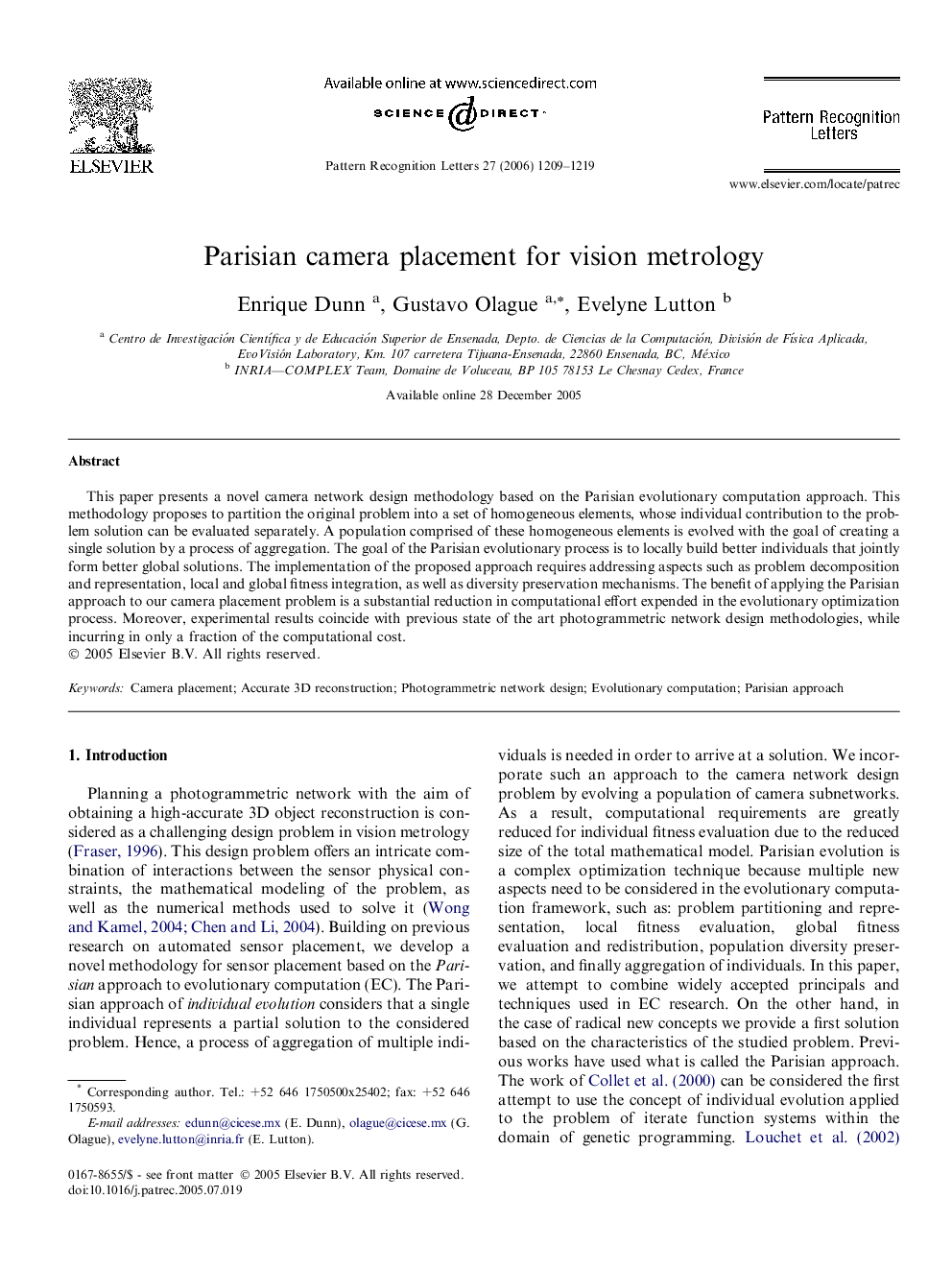| Article ID | Journal | Published Year | Pages | File Type |
|---|---|---|---|---|
| 535736 | Pattern Recognition Letters | 2006 | 11 Pages |
This paper presents a novel camera network design methodology based on the Parisian evolutionary computation approach. This methodology proposes to partition the original problem into a set of homogeneous elements, whose individual contribution to the problem solution can be evaluated separately. A population comprised of these homogeneous elements is evolved with the goal of creating a single solution by a process of aggregation. The goal of the Parisian evolutionary process is to locally build better individuals that jointly form better global solutions. The implementation of the proposed approach requires addressing aspects such as problem decomposition and representation, local and global fitness integration, as well as diversity preservation mechanisms. The benefit of applying the Parisian approach to our camera placement problem is a substantial reduction in computational effort expended in the evolutionary optimization process. Moreover, experimental results coincide with previous state of the art photogrammetric network design methodologies, while incurring in only a fraction of the computational cost.
